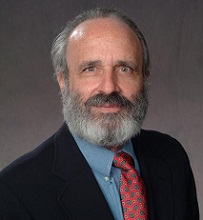 William A. Hyman
William A. Hyman
Professor Emeritus, Biomedical Engineering
Texas A&M University, w-hyman@tamu.edu
Read other articles by this author
The 700 plus page ONC Proposed Rule on “21st Century Cures Act: Interoperability, Information Blocking, and the ONC Health IT Certification Program” was released on February 11, 2019. The associated Press Release says how wonderful this rule is, including that it “would increase choice and competition while fostering innovation that promotes patient access to and control over their health information”, and that ““These proposed rules strive to bring the nation’s healthcare system one step closer to a point where patients and clinicians have the access they need to all of a patient’s health information…”. Of course, striving is generally a good thing but it isn’t the same as achieving. And “one step closer” is a fairly vague level of achievement. In addition, actually knowing if you achieved something takes specific goals, and perhaps more importantly, measurement against those goals. It is also helpful if the goals are things with proven impact, as opposed to things chosen because they can be easily measured. We are also assured that ONC has aimed to implement and administer the Certification Program in the least burdensome manner that supports the policy goals. I am sure that those who directly deal with this program are comforted by knowing it could have been even more burdensome. There are also 6 deregulatory activity for which credit is claimed, several of which were already obsolete.
A February 18, 2019 blog post available on HealthData Answers by Dr. Rucker, National Coordinator for Healthcare Information Technology, continued the self-congratulatory theme. Focusing on the Application Programming Interfaces (API) portion of the rule, Dr. Rucker wrote that he was “optimistic that we as patients and consumers will finally have deep insight into our health and new data to prevent sickness.” Yet he also wrote that although “we do not know exactly what a secure open API future will bring, we can expect change in healthcare to be transformative”. Transformative is a popular term these days which generally means that something will be substantially different. However different doesn’t automatically mean better, if we could fully define better, and were willing to measure it. Dr. Rucker also has some specific applications in mind. For example, he suggests that we will have better control of our medications and their costs, that we will be able to bring machine learning and artificial intelligence directly to our health records on our smartphones, and that apps we choose will help us to live more healthy and productive lives by integrating medical data into our daily lifestyle choices, including exercise and eating.
The blog post also asserts “Congress’s 21st Century Cures Act and modern computing allow us to revisit many of the assumptions about what delivery of medical care should be.” What those assumptions are is not elaborated on making them somewhat difficult to revisit. Finally, the post says that ONC’s proposed rule “can serve as one of the largest steps necessary to make healthcare more transparent and patient accessible”. I’m not sure we have rank order steps from which we can identify the ”largest”, or even what largest might mean. I’m also not sure what all this has to do with making healthcare more patient accessible which I would think means increasing the availability of healthcare to those who now have little or none. But that isn’t directly a healthIT problem as currently defined. So what it currently means is that we will somehow have better healthcare for those who already have healthcare, even without having elaborated on how it will it be better.
